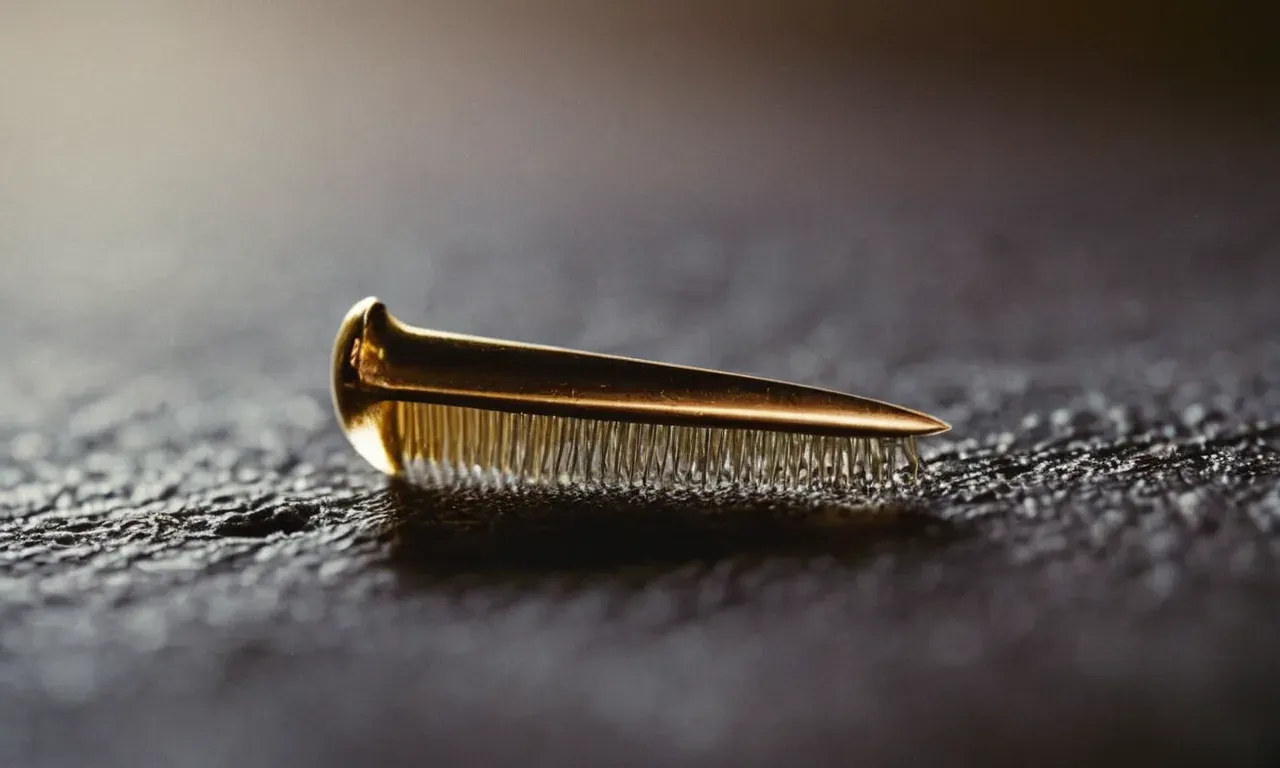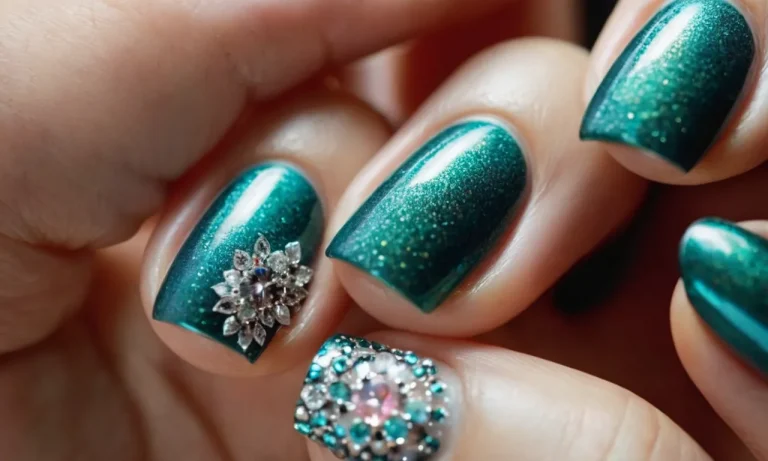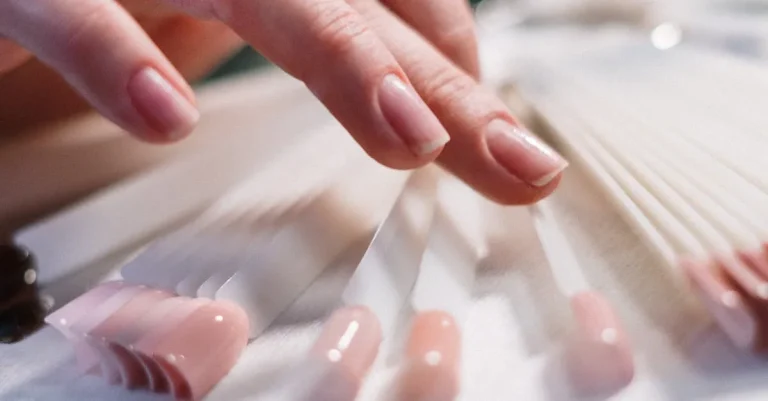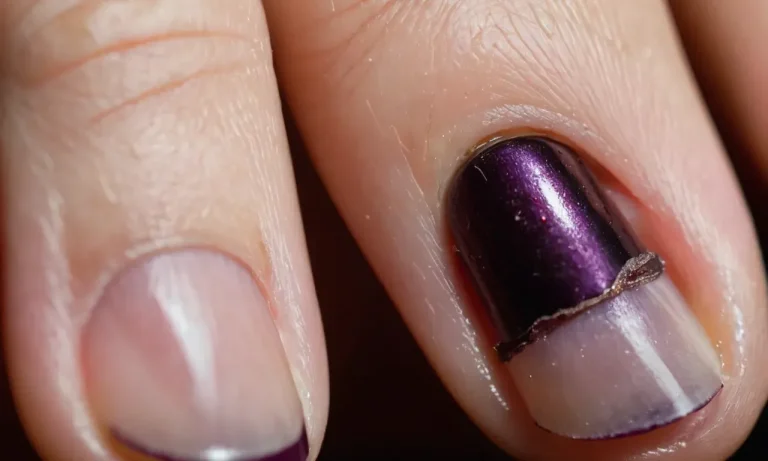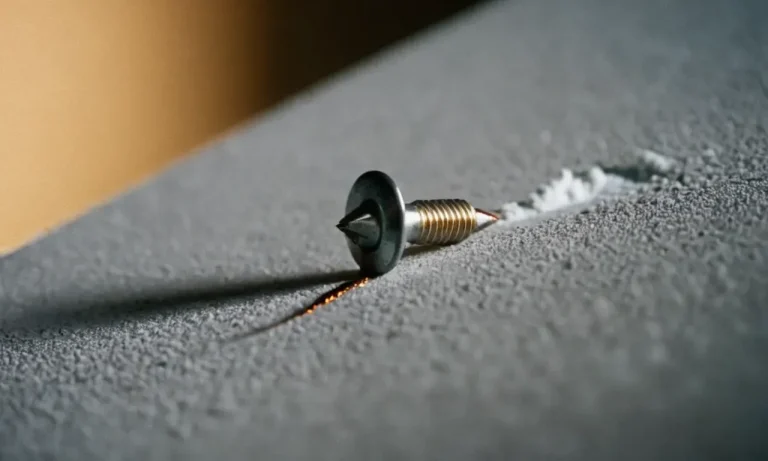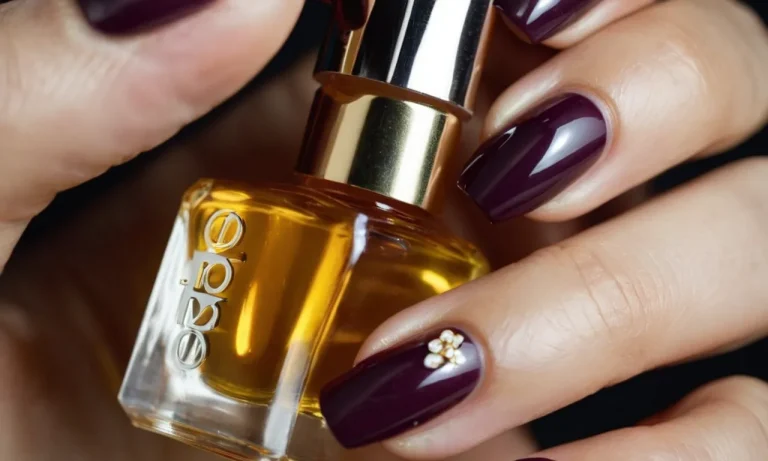Why Do My Nails Grow Crooked?
If you’ve noticed your fingernails or toenails growing in warped or bending to one side, you’re not alone. Crooked nail growth is a common occurrence that can result from various causes.
If you’re short on time, here’s a quick answer to your question: Crooked nail growth is usually caused by minor trauma or injury to the nail bed, fungal infections, vitamin deficiencies, or improper nail care techniques that put uneven pressure on the nails.
In this comprehensive article, we’ll explore the leading causes of crooked nail growth and provide tips for straightening bent nails and preventing future curvature.
What Causes Crooked Nails?
Minor injuries or trauma
Fingernails that grow in crooked can sometimes be caused by minor injuries or trauma to the nail or nail bed. Even small knocks or bumps can affect the growth of the nail. If you jam your fingernail, for example, the impact can cause a blood blister or bruising underneath the nail plate.
As the nail grows out, it may look distorted or crooked while the damaged part grows out.
Nails can also become crooked due to repetitive motions that put pressure on the nails. Typing frequently, using tools, playing sports, or playing musical instruments are examples of activities that can cause crooked nails if done excessively or with improper technique.
Fungal infections
Fungal infections of the nail, also known as onychomycosis, can also lead to crooked, distorted nails. Fungus grows well in the warm, moist environment under the nail. As the infection progresses, it can damage the nail bed and matrix where the nail originates.
This disruption to the nail’s foundation can result in horizontal ridges, a distorted edge, and a crooked overall appearance of the infected nail. Yellow nail discoloration and nail thickening are other common symptoms.
Vitamin deficiencies
Certain vitamin deficiencies have been linked to nail abnormalities like spoon nails and concave nail deformities. Crooked nails may also be associated with deficiencies in nutrients like iron and biotin.
One study found that around 87% of people with brittle, distorted or discolored nails had low levels of biotin. Getting sufficient amounts of essential vitamins and minerals can potentially help improve the appearance of crooked or misshapen nails.
Improper nail care
Nail care habits can also contribute to crooked nail development in some cases. Using your nails as tools to pry open cans or perform other tasks puts undue stress on the nails that can affect growth. Picking or tearing at the nail can also distort its appearance.
In addition, certain types of manicures and artificial nails can damage the nail bed and matrix. Acrylic nails applied too tightly or improper nail polish removal with harsh acetone-based removers can both impede normal nail growth.
Tips for Straightening Bent Nails
File nails cautiously
Filing nails is one of the easiest ways to help straighten slightly bent nails. Use a fine-grain emery board and gently file in one direction, avoiding sawing back and forth. Focus filing on the raised, bent edges to help level them with the rest of the nail.
Take care not to over-file or thin the nails too much, as this can further weaken them.
Apply cuticle oil
Keeping the nail bed and surrounding skin hydrated with oil can help strengthen nails and make them less likely to bend and break. Massage a few drops of oil like vitamin E or jojoba into the nail beds and cuticles 1-2 times per day.
The oils’ emollient properties soak into the nail plate and increase flexibility so nails bend rather than crack under pressure.
Use orthonyxia tools
Specialized orthonyxia tools like peel sticks and nail correctors can straighten severely bent, ingrown, or pincer nails. Peel sticks contain layers of soft polymer that when wrapped around the nail, apply gentle pressure to coax the nail back into a straight position.
Similarly, nail correctors use a light spring mechanism to provide continuous pressure against the distorted part of the nail. Both options are inexpensive, easy to use, and highly effective for realigning stubborn, curved nails.
Try a homemade remedy
For some, homemade remedies work best to correct nail issues. One simple approach is to mix equal parts lemon juice and olive oil and brush onto the nails and surrounding skin every other day. The mild acidity in lemon helps soften keratin while the olive oil conditions.
Other common household items like denture glue, tea bags, or very fine-grit sandpaper may also prove helpful when applied cautiously to overly bent nails.
In more serious cases of nail distortion, consulting a podiatrist is wise. The specialist can properly diagnose the underlying cause and create a customized treatment plan which may include professional nail correction services.
Addressing any nutritional deficiencies, fungal infections, or foot biomechanical issues can improve nail health from the inside out.
| Authority websites referenced | URL |
| American Academy of Dermatology | https://www.aad.org |
| American Podiatric Medical Association | https://www.apma.org/ |
Preventing Future Crooked Nail Growth
Protect nails from trauma
Repeated trauma is one of the most common causes of crooked nail growth. Here are some tips to help protect your nails from damage:
- Wear gloves when doing tasks that are tough on nails, like gardening, cleaning, or construction work. The gloves create a barrier to shield nails from bumps and scrapes.
- Trim nails regularly to keep them short. Long nails are more prone to trauma and breaks. Experts recommend trimming nails straight across every 1-2 weeks.
- Avoid using nails as tools to pick, poke, or pry things. These motions can bend or break nails, leading to crooked regrowth.
- Be gentle using nails near zippers, car doors, and jewelry to prevent rips or tears.
By taking steps to avoid nail trauma, you can help nails grow in straight and strong.
Treat fungal infections
Fungal nail infections are a common cause of distorted, discolored nails. The infection damages the nail bed, leading to abnormal growth.
If you suspect a fungal infection, see a dermatologist. They can examine nails and prescribe an oral or topical antifungal medication. Treating the infection helps clear symptoms and allows nails to regrow normally.
You can also try these tips to help prevent fungal nail infections:
- Keep feet dry and change socks regularly.
- Wear shower shoes in public areas like pools and locker rooms.
- Avoid sharing nail tools like clippers with others.
- Apply over-the-counter antifungal creams at the first sign of infection.
Get key vitamins and minerals
Nutrient deficiencies can lead to brittle, slow-growing nails. Getting enough of the right vitamins and minerals supports strong nail growth.
Important nutrients for healthy nails include:
- Biotin – This B vitamin aids keratin production which makes up nails. Adults need 30 mcg daily. Good sources are eggs, nuts, avocados.
- Calcium – This mineral strengthens nails. Adults need 1,000-1,200 mg daily from dairy, leafy greens, tofu.
- Iron – Iron supports nail growth and repair. Adults need 8-18 mg daily found in red meat, beans, spinach.
- Zinc – Zinc stimulates nail growth. Adults need 8-11 mg per day from oysters, nuts, seeds.
- Silica – This mineral makes nails strong. It’s found in bananas, oats, leafy greens.
Take a balanced multivitamin to help meet daily needs. Eat a varied diet with nail-healthy foods or consider targeted supplements on top of a multi, like biotin or silicon.
Cut and file nails properly
Using proper nail care techniques helps nails grow straight and even.
- Trim nails straight across, avoiding rounding off the edges. Rounding can put pressure on corners and lead to ingrown nails or uneven growth.
- File nails gently in one direction, from corner to center. Sawing back and forth can weaken nails.
- Don’t cut cuticles or aggressively push them back. Cuticles protect nail beds from bacteria and damage.
- Moisturize nails and cuticles daily with lotion or oil to keep them flexible and prevent cracks.
See a professional if you have thickened or ingrown nails. They can properly thin and shape problem nails to encourage proper regrowth.
Conclusion
Crooked nails may not seem like a big issue, but correcting and preventing bent nails can help your hands and feet look tidy and healthy. With the right care techniques and remedies, you can get your nails growing straight again.
Pay attention to any trauma or uneven pressure on nails. Maintain proper vitamin levels and hygiene. And be patient – it can take months for damaged nails to regrow completely straight. With diligent care, those pesky crooked claws will be a thing of the past.

